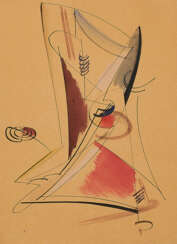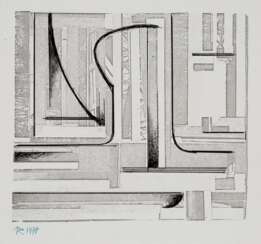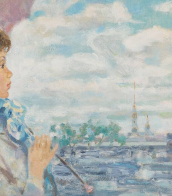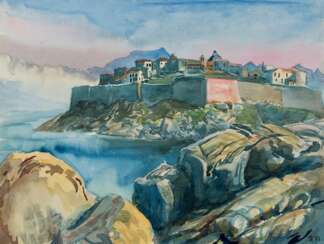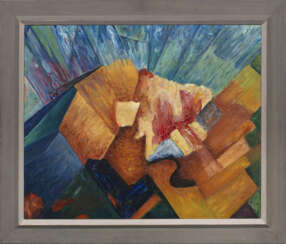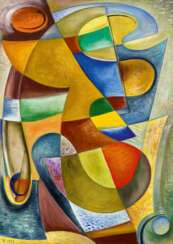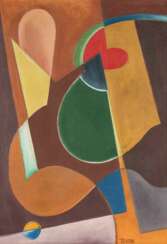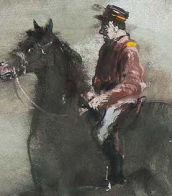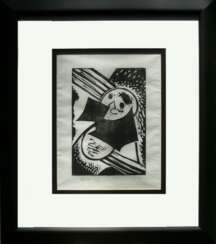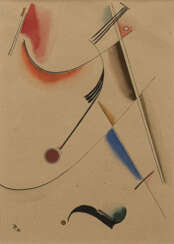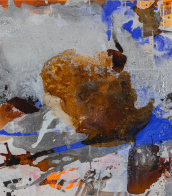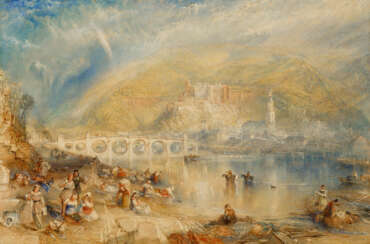thomas ring (1892 - 1983)
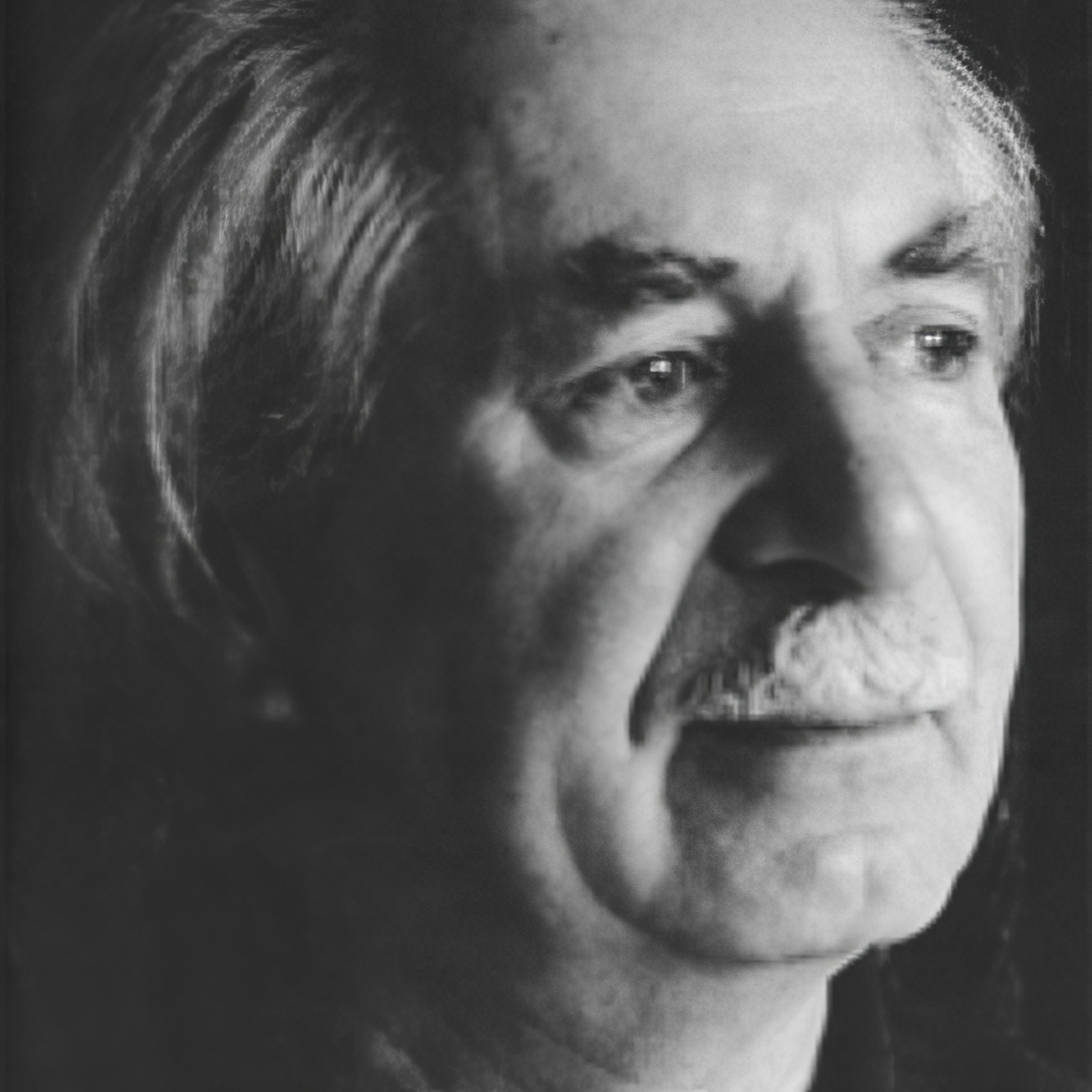
Thomas Ring was a German astrologer, painter and poet.
Thomas Ring studied in the class of the graphic artist Emil Orlik. He was intensively involved in the emerging expressionism and abstract painting.
As a 'degenerate painter' and (from 1927) a member of the Communist Party, he and his family emigrated to Austria at the end of 1932. In 1943 and 1944 he worked at the Institute of Psychology at the University of Strasbourg during the Second World War. After Strasbourg was liberated from the Nazis by the Allies, both he and his wife were imprisoned in a French prisoner-of-war camp.
After his liberation from the camp, Thomas Ring returned to Austria in 1946. In 1952 he settled in the countryside in the Black Forest, Germany.
He took part in three exhibitions (1961 in Berlin, 1971 and 1973 in Cologne), in which he was presented as a constructivist and a member of Der Strum. In 1974, Dumont Studio Cologne held a solo exhibition with forty-seven of his works.
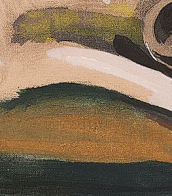

Thomas Ring was a German astrologer, painter and poet.
Thomas Ring studied in the class of the graphic artist Emil Orlik. He was intensively involved in the emerging expressionism and abstract painting.
As a 'degenerate painter' and (from 1927) a member of the Communist Party, he and his family emigrated to Austria at the end of 1932. In 1943 and 1944 he worked at the Institute of Psychology at the University of Strasbourg during the Second World War. After Strasbourg was liberated from the Nazis by the Allies, both he and his wife were imprisoned in a French prisoner-of-war camp.
After his liberation from the camp, Thomas Ring returned to Austria in 1946. In 1952 he settled in the countryside in the Black Forest, Germany.
He took part in three exhibitions (1961 in Berlin, 1971 and 1973 in Cologne), in which he was presented as a constructivist and a member of Der Strum. In 1974, Dumont Studio Cologne held a solo exhibition with forty-seven of his works.
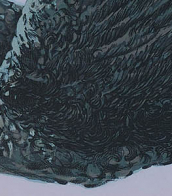

Thomas Ring was a German astrologer, painter and poet.
Thomas Ring studied in the class of the graphic artist Emil Orlik. He was intensively involved in the emerging expressionism and abstract painting.
As a 'degenerate painter' and (from 1927) a member of the Communist Party, he and his family emigrated to Austria at the end of 1932. In 1943 and 1944 he worked at the Institute of Psychology at the University of Strasbourg during the Second World War. After Strasbourg was liberated from the Nazis by the Allies, both he and his wife were imprisoned in a French prisoner-of-war camp.
After his liberation from the camp, Thomas Ring returned to Austria in 1946. In 1952 he settled in the countryside in the Black Forest, Germany.
He took part in three exhibitions (1961 in Berlin, 1971 and 1973 in Cologne), in which he was presented as a constructivist and a member of Der Strum. In 1974, Dumont Studio Cologne held a solo exhibition with forty-seven of his works.


Joseph Mallord William Turner, a seminal figure in British painting, was born in 1775 and left an indelible mark on the Romantic movement. Known for his expressive coloration, imaginative landscapes, and turbulent marine paintings, Turner's work transcends the traditional boundaries of art to capture the sublime force of nature. His career was distinguished by early talent, evidenced by his acceptance into the Royal Academy at the young age of 14, and a prolific output that included over 2,000 paintings and 19,000 drawings and sketches.
William Turner's unique approach to landscape painting, characterized by dramatic skies and atmospheric effects, set a new standard for capturing mood and emotion on canvas. His innovative use of light and color influenced countless artists, elevating landscape painting to rival the status of history painting. Turner's legacy is also marked by his eccentricity and reclusiveness, traits that only added to the mystique surrounding his artistic genius.
Among his most famous works are "The Fighting Temeraire," symbolizing the passing of the old world, and "Rain, Steam and Speed," capturing the Industrial Revolution's impact. These paintings not only showcase William Turner's technical skill but also his philosophical engagement with the changing world around him.
For collectors and experts in art and antiques, William Turner's works represent the pinnacle of Romantic art, offering insight into the 19th-century aesthetic and philosophical landscape. His influence on subsequent generations of artists underscores his position as a pivotal figure in the history of Western art.
To stay informed about Joseph Mallord William Turner's works and related events, signing up for updates from reputable art institutions can provide valuable insights into new discoveries and auction events related to this master of the British landscape.



